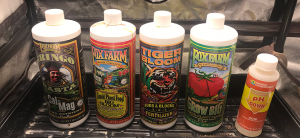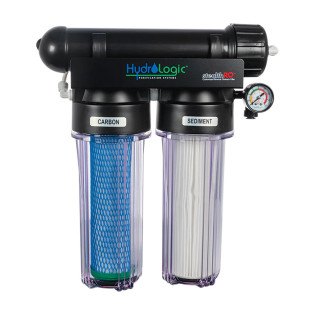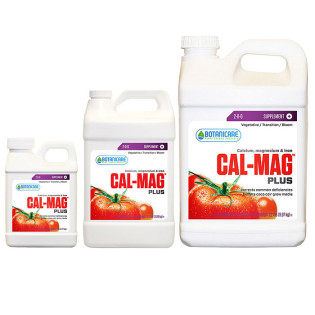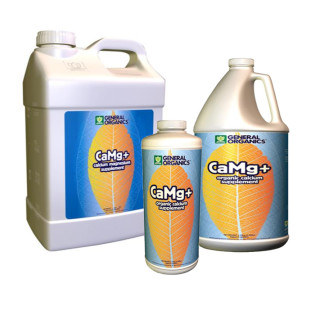
There are a lot of growers who are unaware how mixing plant nutrients affects uptake and absorption rates.
You may not have realized it, but if you don’t mix plant nutrients in the right order, you can cause some to turn to precipitate, and thus they won’t be taken up by your plants.
In this post, we are going to teach you the proper order to mix your nutrients in. But first, we want to cover the basics of mixing plant nutrients and some general safety information.
The Basics Of Mixing Plant Nutrients
While it may seem like common sense, its important to note that before you add in any type of nutrients, you need to have a water source. Do not try and mix nutrients together without water as a diluent.
This will cause all sorts of chemical reactions among the nutrients, and result in settling/fall out. Your plants won’t get the proper nutrient ratios.
Use RO water for best results
Most tap water sources are not great for growing plants with. Thats why some brands have different nutrient packages for hard water specifically.
Your city likely treats your water to make it safe for human consumption, but many of the things they add are harmful to plants, such as chlorine and chloramine.
There are also all kinds of particles in tap water that can affect PPM, or EC. We suggest you find out what exactly is in your water, and potentially invest in an water filter.
Whether it be just a simple dechlorinator and sediment filter, or a more advanced RO filter, something is better than nothing.
This will essentially give you a blank slate for your feeding regimen, as you know there is nothing in your water besides what you mix in.
The proper order for mixing plant nutrients

Now, we are ready to cover the main topic today - the proper order for mixing plant nutrients. And not only the order, but how long you wait for specific nutrients to absorb before proceeding to the next step.
This will vary across different feeding schedules, as not every grower feeds silica, or cal-mag, etc. But, as a general guideline, here is how you should go about mixing your plant nutrients.
Step 1) Start With Silica
You should start by mixing your silica supplement into the plain water, and let it sit for at least 10 minutes.
You want to give the silica plenty of time to form its bonds in your water, as mixing it with other nutrients too early can cause separation and other nutrients will fall out.
Some growers even suggest waiting up to 30 minutes after mixing your silica, to let it form bonds with the water before adding in additional nutrients.
This can be tough to do because you usually just want to get your plant fed and be done with it, but try taking the dog for a walk or reading a few pages of a book after you mix your silica. Then, return and start mixing your base nutrients.
Step 2) Add your base nutrients
Once you’ve thoroughly mixed your silica and let it sit at least 10 minutes, you can add in your base nutrients.
Your particular nutrient line and feeding schedule may have a particular order in which you are supposed to feed.
In general, though, many experts recommend mixing the part (whether it be A or B) which has phosphate in it first. In most instances, this is actually the B-part nutrient.
Step 3) Add your cal-mag
Once your base nutrients are mixed in well, you can add cal-mag if you are using it. This is an especially important supplement for those using RO water, as the filter will strip out these minerals.
It's also important if you are growing in coco, as coco-coir tends to hog calcium and suck it away preventing your plant roots from accessing it in high enough levels.
Step 4) Add any other additives last
The final nutrients you should add to your reservoir are supplements & additives other than silica or cal-mag since these have already been added.
Some of the most common additives include:
Step 5) Finishing by pHing your nutrient solution
The final step in mixing plant nutrients is pHing your nutrient solution. Some growers try and pH their water before mixing in plant nutrients, but because many of the things you add into your reservoir will alter pH, this doesn’t make much sense.
A lot of nutrients will actually bring your water down to the ideal pH range, or at least closer than tap water. Nevertheless, use a pH meter and ensure your pH is in the ideal range: between 5.8-6.8.
If you want to learn more about the importance of the relationship between plant nutrients and pH, check out our complete guide.
Mixing Plant Nutrients In A Commercial Grow Room
If you are a commercial grower with tons of plants and multiple reservoirs you need to keep topped off, you can save a ton of time and money by investing in an auto doser.
These allow for the automation of your pH and nutrient feeding, freeing you from the grow room and getting you back to doing things you enjoy.
We carry a wide range of auto dosers. From something as simple as the Bluelab pH Controller & Auto Doser to the incredibly advanced & sophisticated Total Grow Control Eden.
If you want to talk about your options for automating this portion of your grow room, you can reach out to your experts at 888-815-9763 or by email here.
Not Sure Which Nutrients Are Right For You?

Now that you have a better understanding of best practices for mixing plant nutrients, you can feel more confident in doing so.
But if you have yet to purchase a nutrient package, you are likely wondering which ones are best for you.
If you are a first time grower, you are better off with a simple 2 or 3 part nutrient package with just a few essential supplements such as silica, rooting stimulants, and cal-mag.
We have an entire article on the best plant nutrients for different styles of growing, so start there.
If you still have any questions or hesitations, reach out to our expert growers and we will help you select the right package for you.

























